A new anti-vaccine darling has emerged from the United Kingdom. Dr Aseem Malhotra, a British consulting cardiologist with unconventional views (putting it politely) on the basic science around heart disease, has become the latest crank to promote disinformation around the COVID-19 mRNA vaccines. His unscientific views on cholesterol treatment with statins, promotion of the Pioppi diet and overemphasis on the benefit of lifestyle change in managing heart disease have been discussed previously on Science-Based Medicine. Now, I discuss lifestyle change with all my patients, which is beneficial. However, like everything in medicine, it is not a perfect intervention, and an approach that requires medications plus lifestyle intervention is often necessary to reduce the risk of cardiovascular disease. Even this combined approach is not perfect. People will still develop cardiovascular disease after trying to optimise all the known risk factors (although at a lower rate than if they did not take preventative measures).
Self-promotion and official corrections
Malhotra has brought one primary skill to the anti-vax community: prolific self-promotion. This characteristic has resulted in several incidents where official organisations had to correct grandiose claims by Malhotra and reaffirm that they do not support his views. For example, Aseem Malhotra received a “Champion of Preventative Medicine” award at an international medical graduate (IMG) dinner. During the event, he posed for a picture with the Chair of the British Medical Association (BMA) at the time Chaand Nagpaul. Aseem then posted the following Tweet:

The above Tweet clearly implies the British Medical Association gave him the award. This event resulted in the BMA having to issue a Tweet and perform an enquiry into the event. The most telling quote from the enquiry was, “A sense of politeness and being ‘put on the spot’ were major factors in Chaand being pictured with Aseem Malhotra.” That is hardly a glaring endorsement. Both the BMA and Dr Nagpaul also sent Tweets confirming that they did not endorse Malhotra’s views:
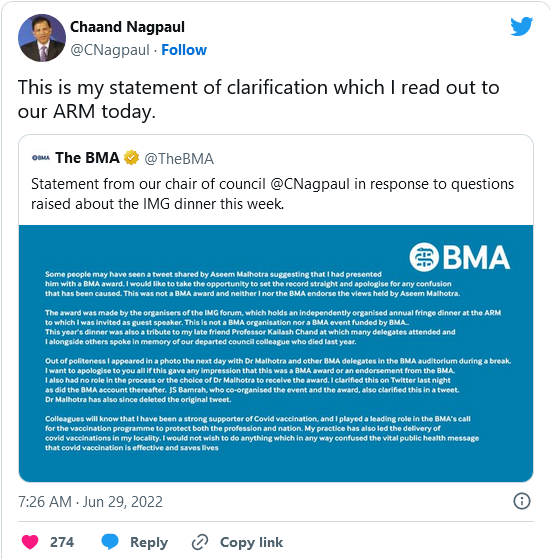
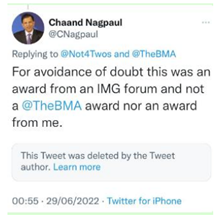
The second event occurred in South Africa, which produced one of the most humorous marketing mistakes of all time:

Putting your picture under the heading “Unsafe and Ineffective” without clarifying the meaning in the subheading is quite a mistake. In true Malhotra fashion, he then Tweeted that he gave a well-received speech in the South African Parliament when it was delivered in a meeting room in the Western Cape Provincial Parliament at the invitation of the Deputy Speaker of the provincial assembly.


My favourite self-promoting Tweet from Malhotra has to be the anonymous letter of support he received from an “American cardiologist,” who apparently writes his letters using the King’s English. I cannot prove he wrote it himself, but my suspicions are high.
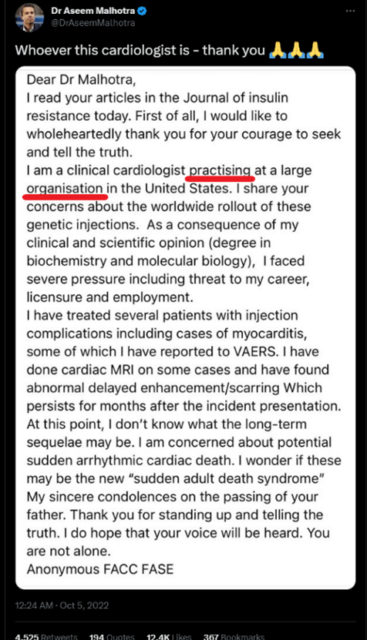
mRNA vaccines and heart attacks
I want to address his primary claim, which he also recently pushed on the Joe Rogan Experience podcast: COVID-19 mRNA vaccines cause ischaemic heart disease (heart attacks and strokes). He has boldly proclaimed, “It’s my duty as a cardiologist to urgently inform every Dr, patient & member of the public that the mRNA product is a likely contributory factor in all unexpected cardiac arrest, heart attacks, strokes, cardiac arrhythmia & heart failure since 2021 until proven otherwise.” Malhotra had included in this claim the death of a 15-year-old girl who died from complications of COVID-19 before she received any vaccine doses.

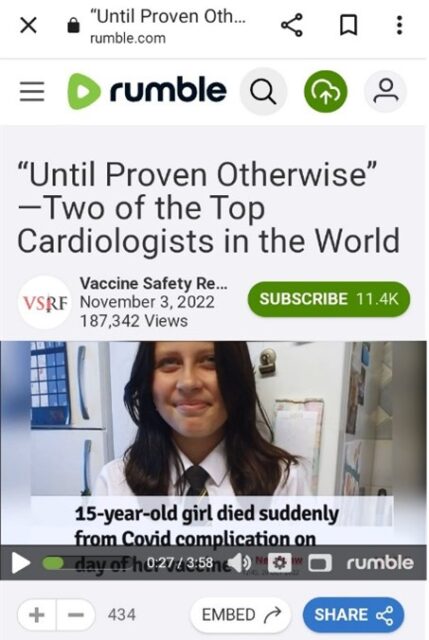
Linking cardiovascular disease to vaccines is a significant score for anti-vaxxers. Among the leading causes of death worldwide, the first is ischaemic heart disease, and the second is stroke. This means that most people will know someone in their social circle who has suffered from one of these conditions, and if anti-vaxxers can link it to the COVID-19 vaccines, they can fuel mass vaccine hesitancy. Their anti-vax following will also come up with numerous personal anecdotes about people experiencing these common conditions following a COVID-19 vaccine. Malhotra recently appeared on a BBC News segment about statins, which is unusual because no major cardiology organisation (including the American Heart Association, Canadian Cardiovascular Society, NICE, and European Society of Cardiology) supports his views on the medication. He is not a “leading expert” in the area; he is just proficient at self-promotion. He took this opportunity to hijack the interview claiming that the excess cardiac deaths occurring in the United Kingdom were due to the mRNA COVID-19 vaccines. The BBC was apparently unaware of his recent anti-vax activity on Twitter, and they were unprepared for this claim, requiring them to apologise and correct the segment in writing.
Malhotra’s flawed evidence linking mRNA vaccines and heart attacks
I would like to closely examine the evidence forwarded by Aseem Malhotra to back this very bold claim and then consider evidence to the contrary. It is also important to note an essential distinction for lay readers. The mRNA vaccine has been associated with rare cases of myocarditis, which is inflammation of the muscle in the heart, and severe forms of myocarditis (especially viral myocarditis) can result in cardiac arrhythmias and sudden cardiac deaths. It is also important to mention that vaccine-induced myocarditis (VIM) is not as severe as other forms of myocarditis and has not been strongly associated with arrhythmias or sudden cardiac death in most people who experience it. Studies in The BMJ and Nature Medicine have demonstrated the course of VIM is much more benign than viral myocarditis. However, Malhotra is not referring to this form of heart disease when discussing ischaemic heart disease (heart attacks). This involves blockage of blood flow supplying the heart muscle and is a common cause of heart disease, especially in high-income countries.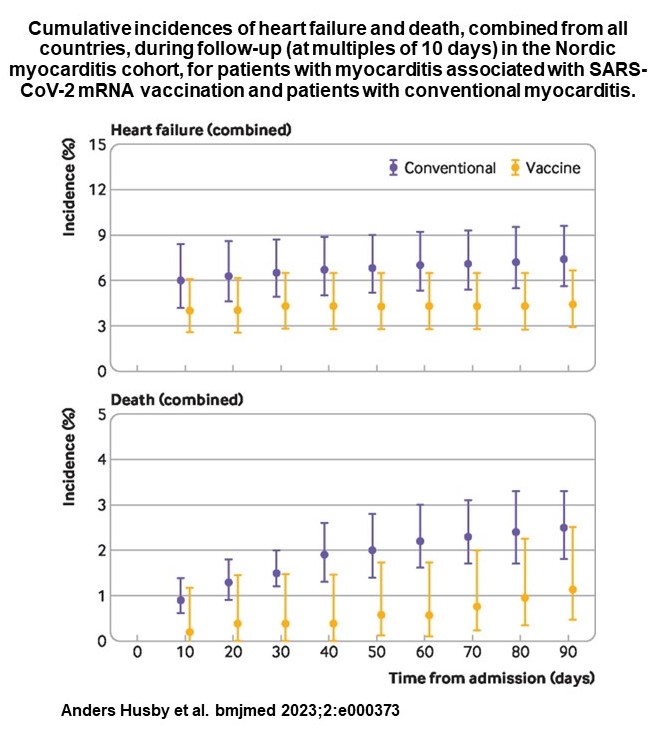
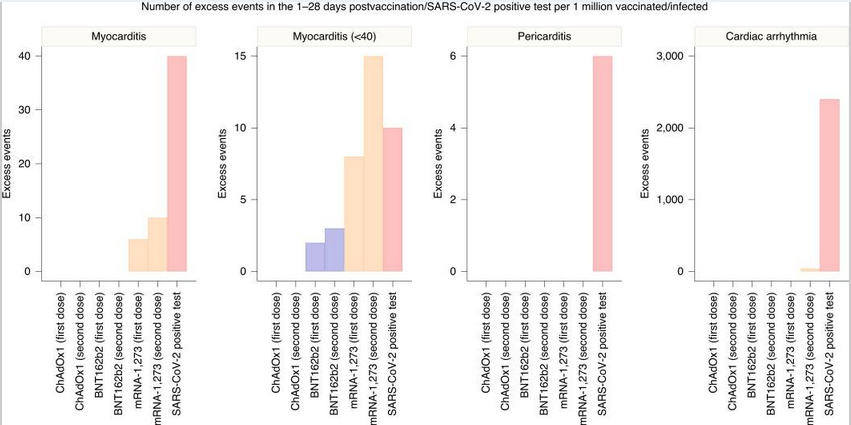
Patone M, et al Risks of myocarditis, pericarditis, and cardiac arrhythmias associated with COVID-19 vaccination or SARS-CoV-2 infection. Nat Med. 2022 Feb
On his most recent appearance on the Joe Rogan Experience, Malhotra repeats the claim that myocarditis is not associated with COVID-19 infection based on this study from Israel. However, as the study title states, they looked at the POST-COVID (emphasis added) period and excluded the first ten days after infection from their analysis. The authors also clearly state that “it has recently been reported that the incidence of myocarditis and pericarditis is increased in COVID-19 patients during the acute illness.” One has to wonder if Malhotra actually read the article. It also appears the ICD-10 code I140.9 (acute myocarditis, unspecified) was included, but I140.0 (infective myocarditis) was not. Myocarditis from COVID-19 infection would be classified as I140.0.
Malhotra lays out his arguments in his narrative review paper published in the Journal of Insulin Resistance, a journal with an impact factor of “error,” of which Malhotra is one of the editors. He has added further arguments on Twitter through a “lecture event” in the United Kingdom and, most recently, the Joe Rogan Experience.
Anecdotes
He begins his argument with an anti-vax perennial favourite: an anecdote. Tragically, Aseem Malhotra’s father died from ischaemic heart disease in the fall of 2022. Initially, Malhotra blamed a 30-minute delay in the ambulance arrival for the bad outcome, which likely contributed to his father’s death. The British Heart Foundation identified this problem as contributing to increased cardiac deaths in the United Kingdom.
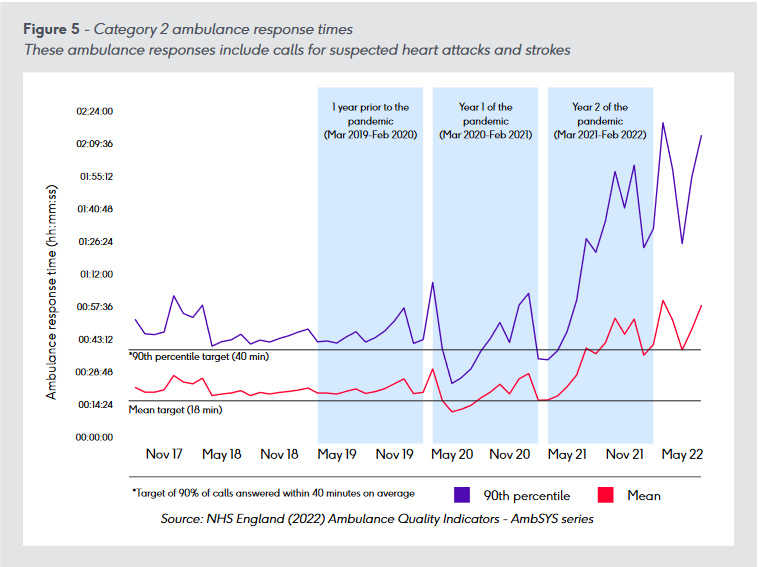
An autopsy showed that his 73-year-old father had a 90% and 75% blockage in two coronary arteries supplying blood to the heart. His father had been living a healthy lifestyle and was previously asymptomatic. Given Malhotra’s strong beliefs about lifestyle almost completely preventing coronary artery disease, he began looking for other reasons for this tragedy. He settled on the two doses of the Pfizer COVID-19 mRNA vaccine his father had received six months prior. Now, I have to sympathise with Malhotra, a sudden loss of a loved one can be devastating, especially when a system failure, such as an ambulance delay, may have contributed. If this had not been a close family member, as a cardiologist, he would have known that many patients who die of cardiovascular disease can be asymptomatic up to the fatal event. He would also recognise that coronary artery disease in a 73-year-old male is not unusual, especially given that there is increased risk in populations of South Asian descent. It is also biologically implausible that exposure to the vaccine could result in significant narrowing in his father’s coronary arteries in just six months. “Accelerated atherosclerosis”, resulting from cocaine use or systemic inflammatory disease (like lupus or rheumatoid arthritis), occurs over 2-3 years. The most rapid development of atherosclerosis occurs post-heart transplant, but there is no known mechanism by which a vaccine could result in this type of damage.
Cherry-picking
After discussing this anecdote, he moves on to another favourite anti-vax past-time: picking cherries. He starts with a conference abstract from Steven Gundry, a GOOP-associated cardiothoracic surgeon who believes specific proteins in plants (lectins) are the “root cause” of many diseases despite mountains of evidence to the contrary. Gundry’s website is reminiscent of his supplement-pushing cardiac surgery colleague, Mehmet Oz. This abstract, heavily criticised by experts, including me and SBM-contributor Frank Han, had an expression of concern added to it and had to be extensively rewritten. Gundry has been using a “PULS” score, a mixture of 9 biomarkers, to try and better classify the risk of developing cardiovascular disease in addition to the traditional risk factors (smoking, diabetes, lack of physical activity, male sex, dyslipidaemia and obesity). It is critical to note that this test has not been fully validated and is currently not recommended by any major cardiovascular society. The initial study on this score used it on databases and found it could reclassify 43% of “intermediate risk” patients as “high risk”. It is not diagnostic of the presence of coronary artery disease. The abstract measured the PULS score 3-5 months before a COVID-19 vaccine and then 2-10 weeks following the second dose and found increases in the score primarily due to elevated IL-16, sFas and HGF suggesting an increase in calculated 5-year risk of cardiovascular disease from 11 to 25%.
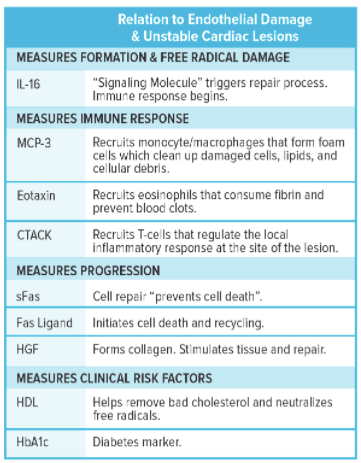
Picture credit: GD Biosciences
Many things are wrong with this analysis. You will notice that this test includes inflammatory markers, which could increase from an immune response to a vaccine. To test this correctly, you want to do the same measurement before and after other vaccines. You would also like to repeat the test in several months to see if the changes were temporary (once the inflammatory response subsided). It would also be informative to perform the test after a COVID-19 infection (or any other viral infection). You would also want to follow the patients to see if there was an increased incidence of cardiovascular disease. The significance of the findings of this abstract is very unclear (which is doctor talk for meaningless). It certainly is not good evidence of an increased risk of heart attacks after the COVID-19 vaccines.
“Re-analysis” (and p-hacking)
He then turns to another favourite anti-vax pastime: re-analysing data from original Pfizer clinical trial, from 2 years (and countless variants) ago. To be more specific, data from the 6-month follow-up study from the phase 2–3 portion of the Pfizer trial. He goes into the Supplementary Appendix to point out a non-significant four-vaccine versus one placebo cardiac arrest in trial participants. While ischaemic heart disease is a common cause of cardiac arrest, many other conditions (including COVID-19) can result in this type of death. I also found it very interesting that he ignored the fact that “myocardial infarction” (the medical term for “heart attack”) occurred in 2 people in the placebo and none in the vaccine group. Does this mean the Pfizer vaccine prevents heart attacks? Of course not; it is non-significant, much like the difference in cardiac arrests.

Later in the paper, he cites another re-analysis of the mRNA vaccine clinical trial data for Pfizer and Moderna by Fraiman, Doshi, et al., who p-hacked an interim analysis to support the claim that serious adverse events significantly outnumber the benefit of preventing COVID-19 hospitalisation. The issues with this paper have been comprehensively discussed by Orac, Dr Susan Oliver, and Dr Jonathan Howard. Still, in brief, it downplays the benefits of vaccination and over-counts adverse events. In his BBC interview, Malhotra claims that most adverse events of special interest (AESIs) in the paper were “cardiac”, but the study’s tables clearly show that less than half of the AESIs for both vaccines were cardiac-related.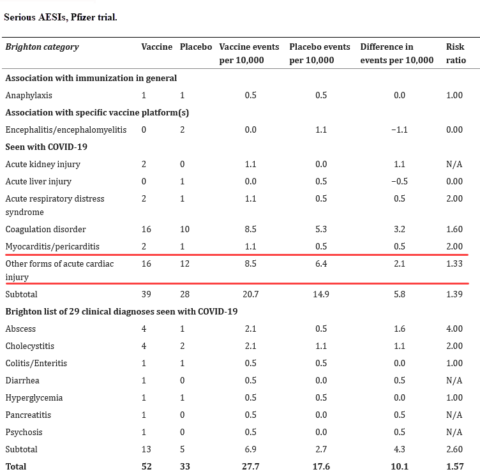
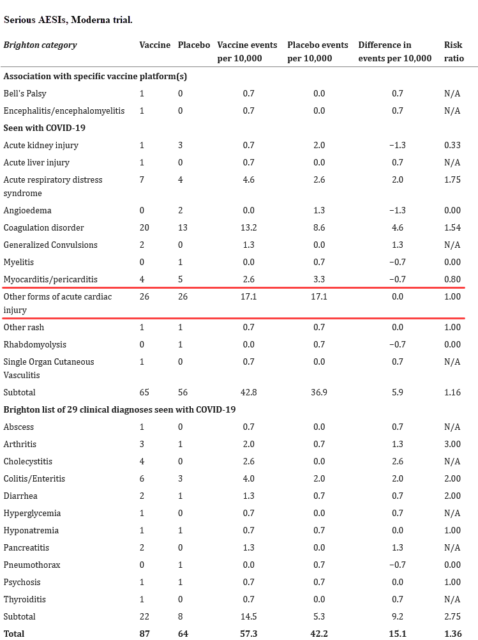
Next, he forwards a study from Scientific Reports (a less-prestigious subsidiary of Nature) about ambulance calls for cardiac arrest in Israel that attempts to correlate it to vaccine doses. The study has been given an expression of concern due to its many methodological issues. The authors tried correlating peak ambulance calls for cardiac arrests in people younger than 40 with peak vaccine doses in Israel. However, the diagram is a mess, as outlined by Dr Susan Oliver, including using different scales to make a visual correlation (red arrows), showing a decrease in heart attacks before the peak of the second dose (blue arrow) and comparing two different rolling averages (5-week for acute coronary syndrome calls and 3-week for vaccine doses and COVID cases; purple arrow). You will also notice in the top figure that the calls for ambulances go up and down randomly throughout the chart. The fact that a peak almost lined up with a peak in vaccine doses is not compelling evidence of a cause-and-effect relationship. The authors did not have access to the individual’s vaccination status in the ambulance or the final diagnosis, so they could not determine if it was actually a heart attack.
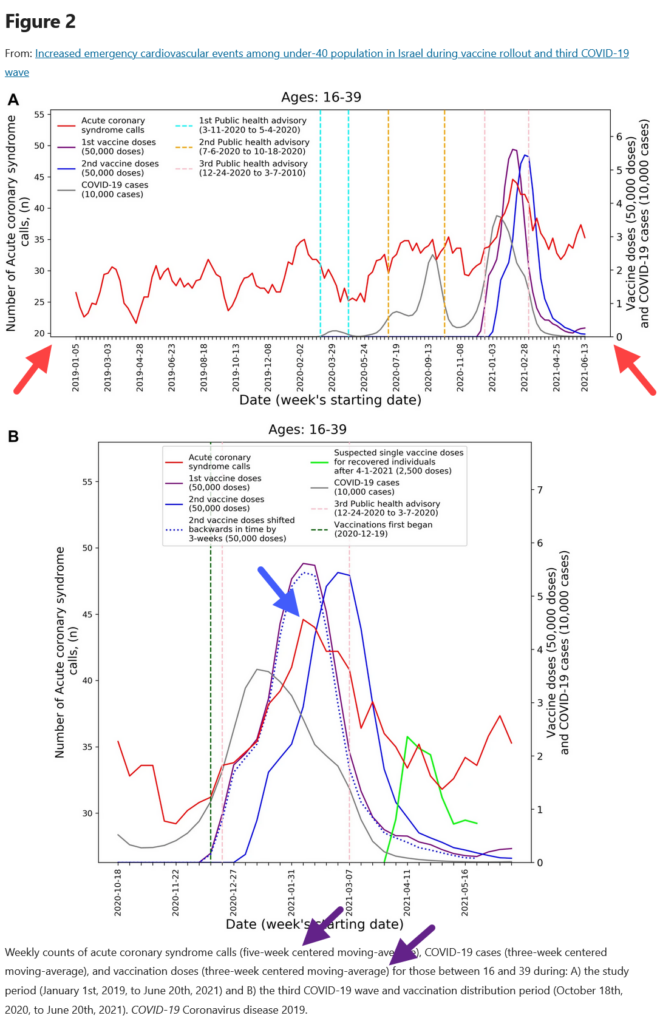
After the release of this study, the Israeli Ministry of Health looked into the numbers further and published them in a presentation (in Hebrew). In the figure translated below, 43% of the people were unvaccinated, 18% did not require transport to the hospital, 52% were diagnosed with non-specific non-cardiac chest pain, and only 6% were hospitalised with a heart issue. This breakdown demonstrates the weakness of correlational studies as evidence of causation.’

Misattribution of causality
Malhotra’s next line of evidence is a report by the British Heart Foundation on 30,000 excess cardiac deaths in the United Kingdom since the pandemic began. The report is quite explicit on what it attributes these excess deaths to, including missed doctors’ appointments in which classic risk factors would be identified and managed, longer wait times for specialist appointments and cardiac investigations/procedures, and delays in ambulances transporting people with acute cardiac events to hospital. What was not on that list? COVID-19 mRNA vaccines. However, this does not stop Malhotra from claiming they are a significant contributing cause. Malhotra is seemingly unaware of the Office of National Statistics (ONS) data showing that most excess ischaemic heart disease deaths occurred in 2020. This was before the COVID-19 vaccines were even available. As I will demonstrate in the second part, COVID-19 has also been associated with an increased risk of cardiovascular events, likely contributing to the large spikes in 2020.
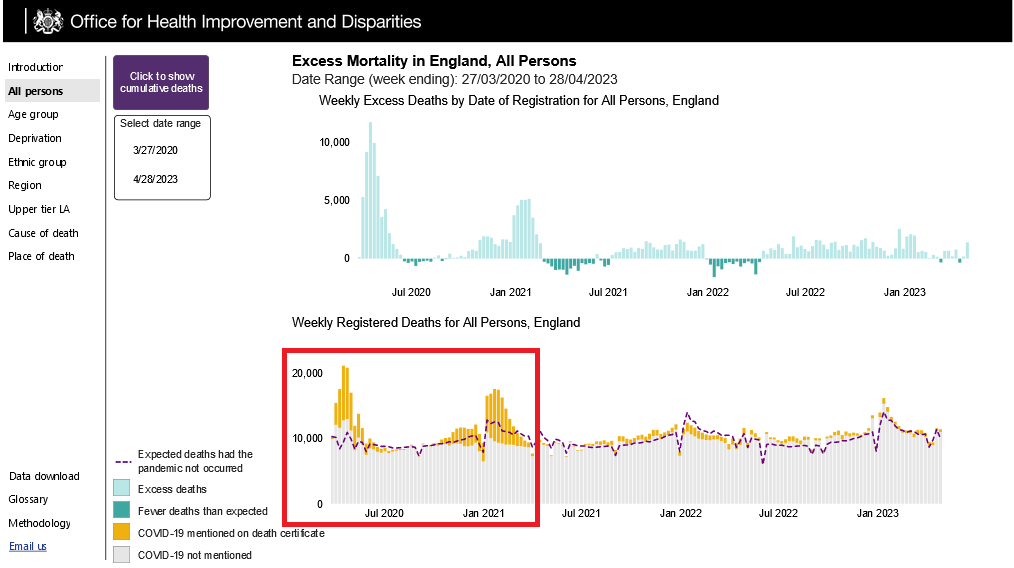
Misrepresenting animal studies
The final line of evidence I’ve seen from Malhotra is this laboratory study on Syrian Hamsters using the viral spike protein, which found endothelial damage. This study used 146,000 times the spike protein found in the blood after humans’ first dose of the Moderna vaccine. This spike protein was not stabilised like the spike protein in the mRNA vaccine, which cannot interact as effectively with the ACE2 receptor (this interaction mediates many of the harmful effects described for the spike protein in the literature). Edward Nirenberg has addressed this study at length previously.
Evidence for: A summary
Malhotra’s claim of “until proven otherwise” requires remarkable evidence to be valid. Let us summarise the evidence he has provided:
- A tragic anecdote of his elderly father’s death from coronary artery disease with a biologically implausible timeframe after vaccination.
- Changes in a non-validated score of unclear significance have not been investigated properly by the authors.
- A non-significant difference in cardiac arrests in the original Pfizer trial, while ignoring fewer “myocardial infarctions” in the vaccine group.
- Claims from an unnecessary “re-analysis” of the Pfizer and Moderna trials did not show that most adverse events are cardiac.
- Correlation between ambulance calls and vaccine doses, which further analysis shows are unrelated.
- Misrepresentation of a report from the British Heart Foundation with his claims unsupported by ONS data.
- A laboratory study which overdosed Syrian hamsters with viral (not vaccine) spike protein.
Now, to be fair in accusing him of picking cherries, there may be further evidence he has not presented to support his position. Has he excluded significant evidence that does not support his conclusions? Let’s look at what he left out.
Evidence against Malhotra’s claims
Given ischaemic heart disease is so common and a leading killer worldwide, multiple large studies have assessed whether the COVID-19 vaccines are associated with an increased risk of heart attacks.
Pfizer was required to conduct a post-marketing real-world trial for the vaccine’s safety and efficacy, which is reported in multiple Clalit Health Services Studies (Clalit is a major Israeli not-for-profit health services organization). The safety study included 844,828 patients and examined the difference between those infected with SARS-CoV-2 and those that received the vaccine. The risk ratio for myocardial infarction (heart attack) was non-significant for the vaccine and elevated for COVID-19 infection.

From Barda et al., click to embiggen.
Now, this is a pharma-backed study, but luckily, it is not the only study examining this question. Drug company-backed studies should not be automatically dismissed, just read very carefully to see if there is bias in the methods or conclusions and seek out corroborating evidence (which we have).
A group from France also looked at a large population of 3.9 million people over 75 years old and compared the risk of acute myocardial infarction 14 days after receiving the vaccine to their baseline time period. This method assumes heart attacks occur randomly and relatively evenly over time and is trying to detect an increased rate two weeks after exposure to the vaccine. You can see in the table that after both the first (RR 0.97; 0.88-1.06) and second (1.04; 0.93-1.16) vaccination, there was no significantly increased rate of acute myocardial infarctions (heart attacks).

This same group repeated this analysis on 46.5 million people under 75 years old and found similar results. There was no increase in acute myocardial infarction following either dose of both the mRNA COVID-19 vaccines.
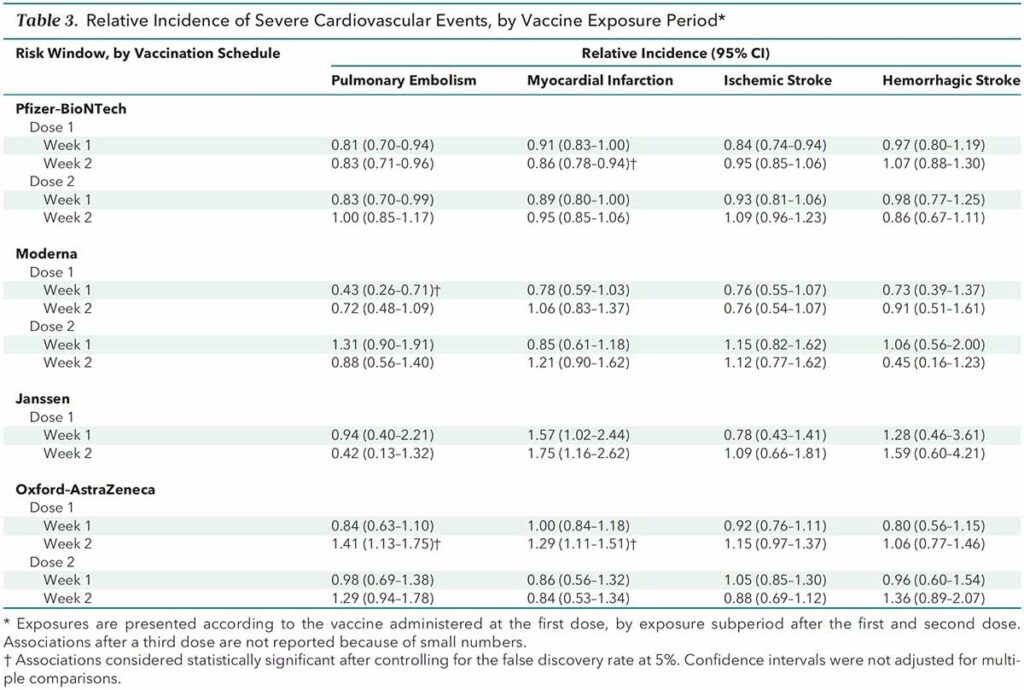
The FDA also conducted a study in the CMS database, which includes adults over 65 years old who are covered by Medicare in the United States. This is a good population to examine, and this database does not rely on self-reporting like VAERS but catalogues payments made and the associated diagnostic codes. An initial signal for acute myocardial infarction was no longer significant when adjusted for monthly variations in background rates.
3.3. Signal evaluation
None of the prespecified data quality assurance checks, including claims duplication and unusual variability in claim accrual, raised data quality concerns (Table S9). Primary findings for signal robustness and signal characterization analyses are summarized in Table 3 . Adjustment for monthly variation in the background rates resulted in statistically non-significant associations for AMI, DIC, and ITP following BNT162b2 vaccination. With background rates from the flu-vaccinated population as the historical comparator, DIC and ITP no longer met the signal threshold, while signals for AMI (RR = 1.41) and PE (RR = 1.48) remained. When rates during the peri-COVID period were used as the historical comparator, PE and DIC no longer met the signal threshold. We conducted an additional ad hoc sensitivity analysis for PE. When PE events were restricted to the inpatient setting, the statistical signal remained (RR = 2.17).
So, evidence from multiple large, well-conducted observational studies on millions of people has found no association between ischaemic heart disease and COVID-19 mRNA vaccines. Much of Malhotra’s argument rests on increased rates of ischaemic heart disease over the last three years and a weak (pretty much non-existent) correlation to country-level vaccination rates. I’ve already demonstrated that the association with COVID-19 vaccines is not convincing, but are there alternate reasons for increases in ischaemic heart disease? As the British Heart Foundation noted, disruptions in routine and cardiovascular care, delays in treatment and testing, and limited resources being redirected to the care of COVID-19 patients have likely contributed. Studies in the United States have shown increased delayed patient presentations with STEMI (ST-elevation myocardial infarction). This is the most severe form of heart attack caused by blockage of one or more coronary arteries and requires time-sensitive interventions to reduce the risk of death. When something disrupts the ability to provide timely care for a STEMI, more people will die of this form of heart attack. Studies also demonstrated that the coexistence of COVID-19 infection and STEMI increased mortality compared to those without COVID-19 infection. These were patients without a concurrent diagnosis of COVID-19 and only included data up to September 2020 (no COVID vaccines available). A meta-analysis showed that these delays resulted in increased mortality, especially in low- to middle-income countries. Studies found similar results in the United Kingdom and England. For patients with non-STEMI heart attacks (unstable angina/NSTEMI), presentation and definitive treatment delays were much worse than STEMIs resulting in increased mortality in 2020. The BMJ noted this decline in treating acute myocardial infarctions and called for urgent action to prevent interruptions in cardiac care in early 2020.
However, further evidence shows a much stronger association between COVID-19 infection and ischaemic heart disease. A study of over four million individuals in The Lancet, which excluded vaccinated individuals, found that COVID-19 was associated with a significantly increased risk of ischaemic heart disease HR 2.81 (2.48-3.19), cardiac arrest HR 1.75 (1.53-2.01) and cardiac-related mortality HR 1.60 (1.51-1.70).

An American cohort study of 153,760 individuals published in Nature found elevated rates of acute coronary syndrome, myocardial infarction, angina and ischaemic heart disease up to 12 months after infection with COVID-19.

Another study in The BMJ found an increased rate of myocardial infarction and ischaemic heart disease in patients hospitalised with COVID-19. This study also demonstrated increased risk of ischaemic heart disease in patients admitted “with” and not “from” COVID-19 (see the bottom-right box for cases with a secondary COVID-19 diagnosis):
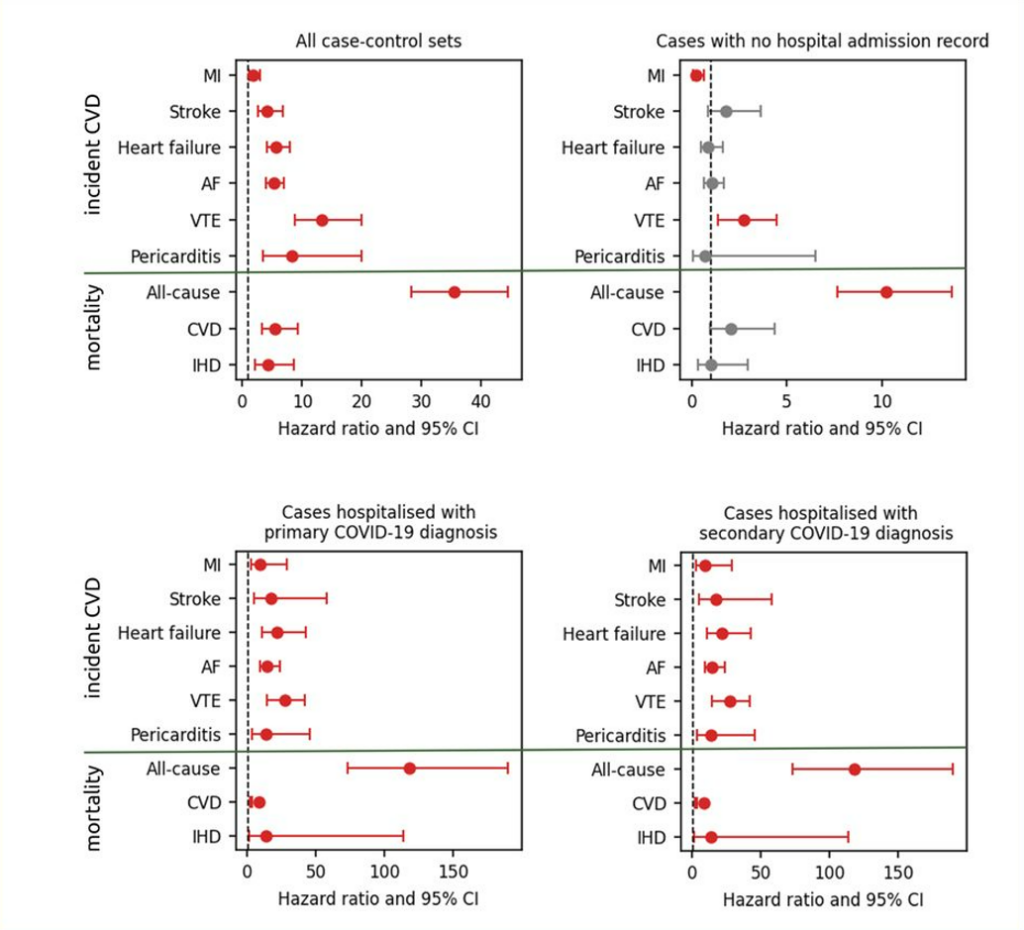
From Raisi-Estabragh et al.; click to embiggen
Malhotra ignores the 35x increase in all-cause death and 4-5x increased rate of cardiovascular disease and ischaemic heart disease to focus on a surprising “reduction” in myocardial infarctions in the non-hospitalised group (top-right in the image above), but ignores the 10x increase in all-cause mortality in this group. This study clearly explains this surprising finding is due to selection bias. If you had a heart attack, you would be hospitalised for it and wind up in the “cases hospitalised with secondary COVID-19 diagnosis” cohort. This is more classic Malhotra cherry-picking at its finest. Un-ironically, he goes on during this lecture to discuss how he is helping people to interpret studies properly.

What about COVID-19 and heart attacks?
So, if we are going to explain elevated rates and deaths due to ischaemic heart disease, it is surprising that Malhotra, a cardiologist, would land on the mRNA vaccines and ignore COVID-19 infection. Now, keen readers may notice an apparent contradiction in my presented data. If I said it is “biologically implausible” for atherosclerosis to develop within 6 months of a COVID-19 vaccine, why would I then argue increased ischaemic heart disease events after COVID-19? This is an excellent question, and the answer is that atherosclerosis is not the sole mechanism that can cause a heart attack. COVID-19 infection is often found to cause a “type 2 myocardial infarction” when the coronary arteries have pre-existing narrowing that does not cause problems when the heart is pumping under normal circumstances. When the patient becomes very sick, and there is a large demand for increased heart pumping, arterial narrowing prevents the blood flow from meeting this increased demand. The severe inflammation induced by COVID-19 can also result in spasms in the coronary arteries as well as the formation of blood clots at the site of pre-existing atherosclerotic plaques. The mRNA vaccines do not have any of these mechanisms. You may remember from Malhotra’s account of the autopsy results there was no mention of a clot or widespread cardiac damage that would be found in these scenarios.
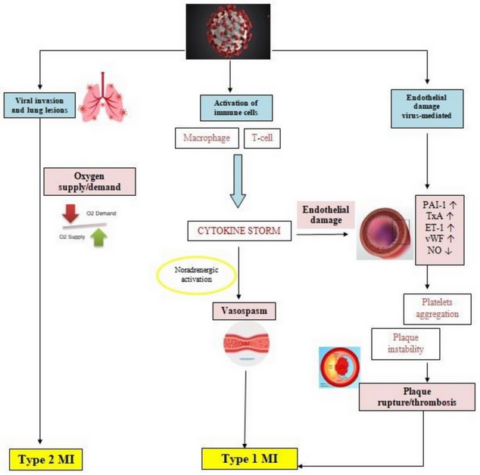
There is also a cohort study out of Korea on almost 600,000 participants which showed that vaccinated people had a significantly decreased rate of myocardial infarction with COVID-19 infection compared to the unvaccinated.

From Kim, Huh, & Park; click to embiggen
COVID-19 vaccination and death
Probably the most concerning outcomes of cardiovascular disease is death. Several studies have also examined death rates following COVID-19 vaccination and the results are very reassuring. A self-control case series (SCCS) out of the United Kingdom examined 3,807 deaths that occurred in young people (under 30 years-old). They found no increase in cardiac deaths following either dose of the mRNA vaccines. This evidence strongly argues against claimed increases in heart attacks amongst vaccinated young people.
This is corroborated by an ironic source, Dr. Joseph Ladapo, the Florida Surgeon General. Ladapo also opposed vaccinating young people and attempted his own SCCS that he claimed “showed increased cardiac mortality in young males”. In actuality, the analysis had a dose-based analysis that confirmed that there was, in fact, no increase risk of cardiac death (but was deleted by Ladapo right before publication).
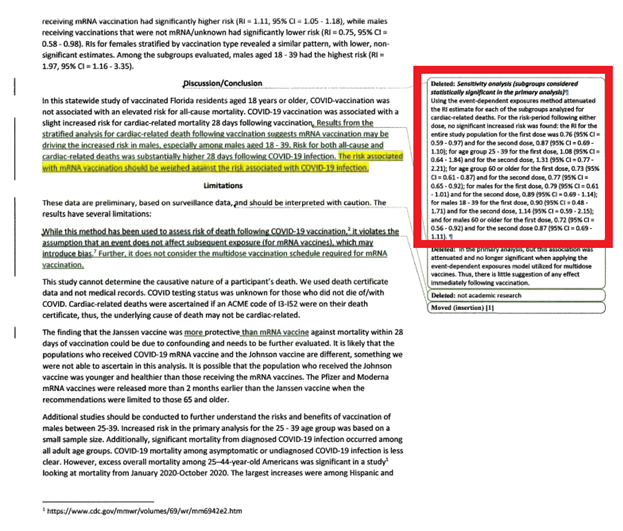
A group in Australia also examined cardiac arrest data and found no increase associated with COVID-19 vaccination. They appropriately divided the study by vaccination status, which provides much stronger evidence of association if one was present. Most anti-vaxxers will present trends in deaths or heart disease without breaking them down by vaccine status, then claim the vaccine must be the cause.
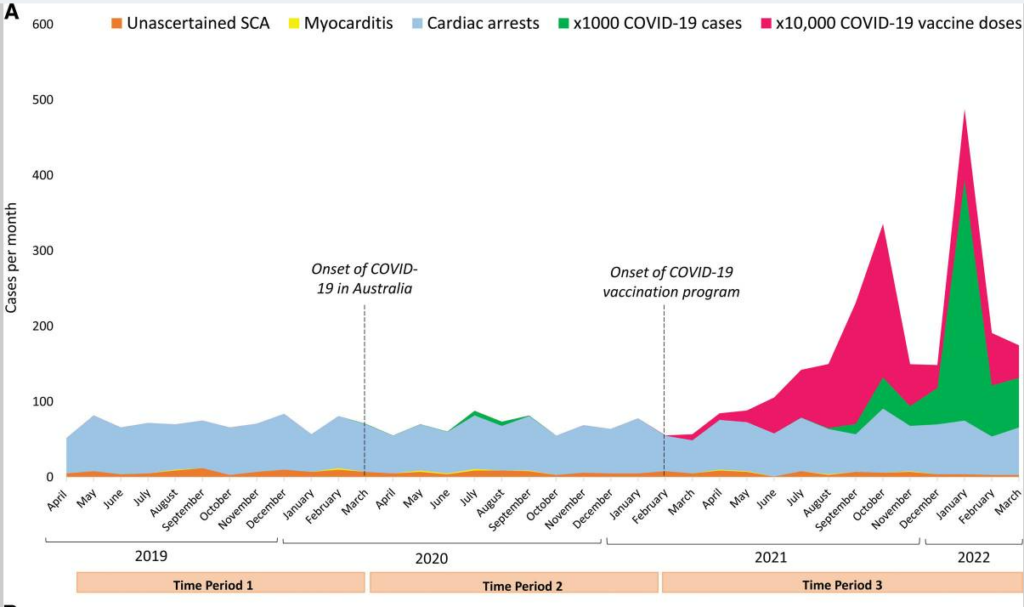
From Paratz et al., click to embiggen.
When you examine the data properly, such as this study did, the anti-vax argument breaks down completely. Dr. Susan Oliver has also provided an excellent discussion of this paper. You can see there is no change in cardiac arrests (blue) after the vaccination program was initiated and no significant increase in cardiac events in vaccinated versus unvaccinated young people.
Conclusion: False until proven otherwise
So, let me now summarise my evidence against Malhotra’s claims:
- Large cohort studies performed on tens of millions of people who received the mRNA vaccines demonstrating no association with increased rates of ischaemic heart disease
- Interruptions in cardiac care resulted in increased cardiac deaths (as opposed to the mRNA vaccines)
- Studies on millions of patients demonstrating increased rates of ischaemic heart disease in those infected with COVID-19
- A smaller study suggesting vaccination actually reduces the risk of ischaemic heart disease following COVID-19 infection
- Multiple large studies showing no increased risk of cardiac death following COVID-19 mRNA vaccination
Now, balance that against Malhotra’s abstract on a non-validated blood test of unclear significance, questionable re-analyses of preliminary clinical trial data, a non-existent correlation between ambulance calls and vaccine doses, an increased rate of excess cardiac deaths in England which primarily occurred pre-vaccination, and a laboratory study where Syrian hamsters were overdosed with viral spike protein. Which do you find more compelling? After my review of all the data (and not just cherry-picked subsets) I conclude that there is no association between ischaemic heart disease and mRNA vaccines. I would also be as bold to say that any claim made by Aseem Malhotra about COVID vaccines should be presumed false until proven otherwise.

